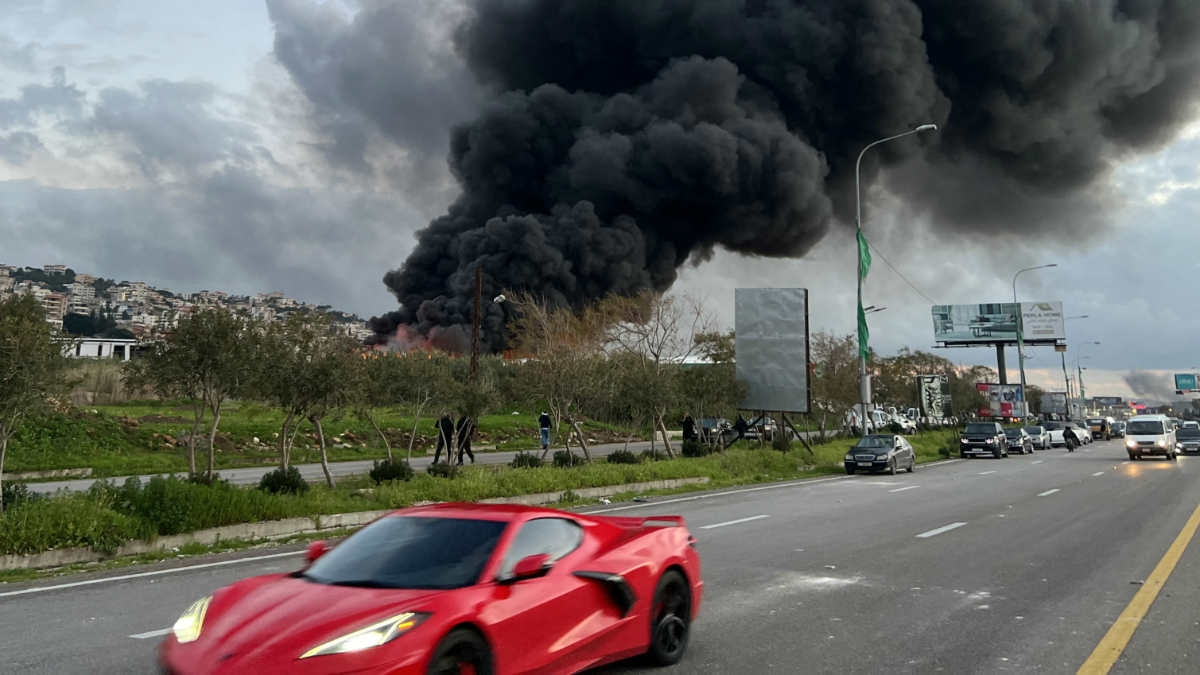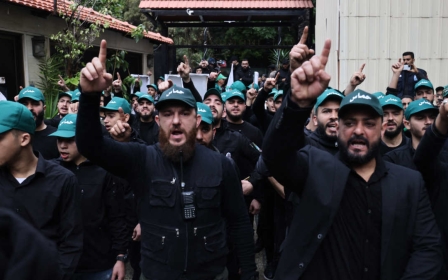Lebanon: Israeli air strikes pummel area around port city of Sidon

Israeli air strikes rocked southern Lebanon near the port city of Sidon on Monday, with video footage showing flames and debris from one blast shooting up just metres away from a highway populated with civilian vehicles.
The Israeli military confirmed the strikes, saying they targeted arms storage facilities near Sidon in southern Lebanon in retaliation for a drone sent into Israel by Hezbollah, an Israeli military spokesperson announced on Monday.
"We located an unmanned aerial vehicle from Hezbollah near Tiberias, which apparently crossed today and crashed near Tiberias," Rear Admiral Daniel Hagari told a televised news briefing. "In response to this activity, we attacked weapons depots near Sidon."
The strikes mark one of Israel’s deepest forays yet into its Mediterranean neighbour's territory, as it exchanges near-daily fire with Iran-backed Hezbollah.
One video filmed from a balcony captured the scene with two mushroom cloud explosions billowing up from a civilian neighbourhood facing the Mediterranean Sea.
New MEE newsletter: Jerusalem Dispatch
Sign up to get the latest insights and analysis on Israel-Palestine, alongside Turkey Unpacked and other MEE newsletters
Since October, most of the fighting between Hezbollah and Israel has been confined to the area along Israel’s northern border with Lebanon, roughly 20 miles away from Sidon.
Monday’s strike on Ghaziyeh, which is home to a large fuel refinery and lies just five kilometres from Sidon city centre, underscored how fighting can quickly escalate.
Sidon and Palestinian resistance
While the strikes mark an escalation in the border war between Hezbollah and Israel, this is not the first time the area has been targeted.
Southern Lebanon is a stronghold of Hezbollah, and Amal, the other main Shia political party in Lebanon.
Since the 1960s, the region has been home to an array of Palestinian armed groups.
Israel bombed Ghaziyeh during the 2006 war, killing 26 civilians. In 2018, Israel was believed to be behind a botched car bombing that targeted Hamas official Mohamed Hamdan in Sidon.
Shortly before the war in Gaza erupted, the Ain el-Hilweh refugee camp near the southern coastal city of Sidon saw bloody clashes between fighters belonging to the Fatah movement and those from the Shabab al-Muslim (Muslim Youth) coalition.
Israel rewrites rules of engagement
US and European officials have been trying for months to broker an agreement between Israel and Hezbollah to end the fighting.
But former senior US officials tell MEE, having calculated that Hezbollah is unwilling to risk a wider war with Israel, the country is taking the opportunity to re-write the rules of engagement with Hezbollah that have governed past flare-ups between the two.
In January, Israel assassinated senior Hamas official Saleh al-Arouri in a Hezbollah stronghold in Beirut.
Last week, the Israeli military said it killed a Hezbollah commander, his deputy and another fighter, in a strike in the south Lebanon city of Nabatiyeh.
But Israel’s strikes have begun to take a deeper toll on civilians. Ten people, including six children, were killed by Israeli strikes on villages across southern Lebanon last week, according to the AFP.
On Friday, Hezbollah chief Hassan Nasrallah vowed that Israel would pay "with blood" for civilians it killed in Lebanon in recent days, warning the group had missiles that could reach anywhere in Israel.
He warned that his Iran-backed movement has "precision-guided missiles that can reach... Eilat" on Israel's Red Sea coast, well beyond the northern towns it usually targets.
The latest uptick in violence has caused international alarm, with fears growing of another full-blown war between Israel and Hezbollah like that of 2006.
Since October, cross-border exchanges have killed at least 269 people on the Lebanese side, most of them Hezbollah fighters but also including 40 civilians, according to an AFP tally.
On the Israeli side, 10 soldiers and six civilians have been killed, according to the Israeli army.
Middle East Eye delivers independent and unrivalled coverage and analysis of the Middle East, North Africa and beyond. To learn more about republishing this content and the associated fees, please fill out this form. More about MEE can be found here.





